

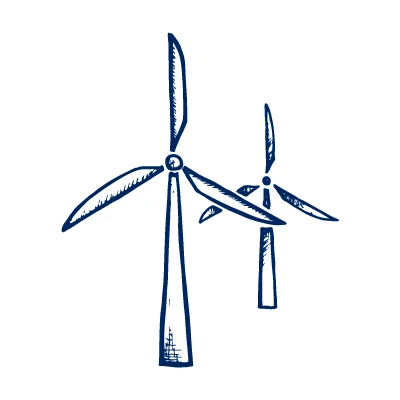
Module 2: Generate
We rely on electricity to connect our communities. It keeps the lights on, the kura (schools) open, and the hospitals running. But where does it come from?
In this module you’ll learn all about the many sources of electricity, and how it’s generated across Aotearoa. Then, you’ll get to work on designing your very own electricity generator!
The great journey of electricity
Electricity goes on an incredible journey to reach your whare (house). This journey can be broken down into three simple steps:
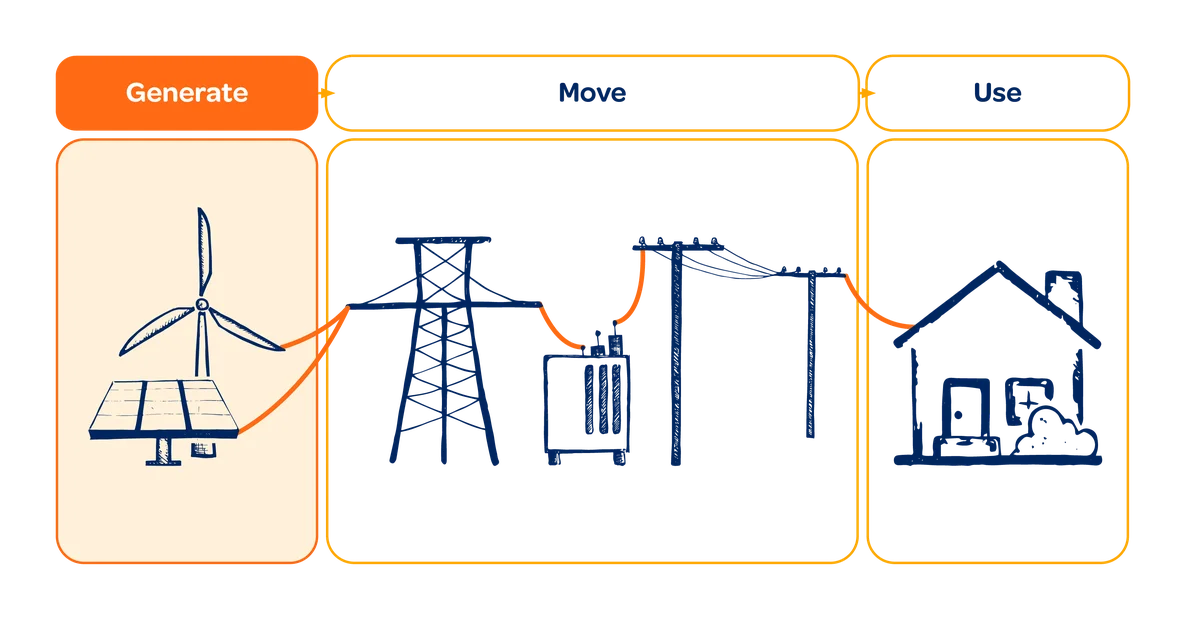
Generate
In this module, we’ll focus on the first step in electricity’s journey, generate – where electricity is generated from an energy source.
Energy sources can either be renewable, or non-renewable.
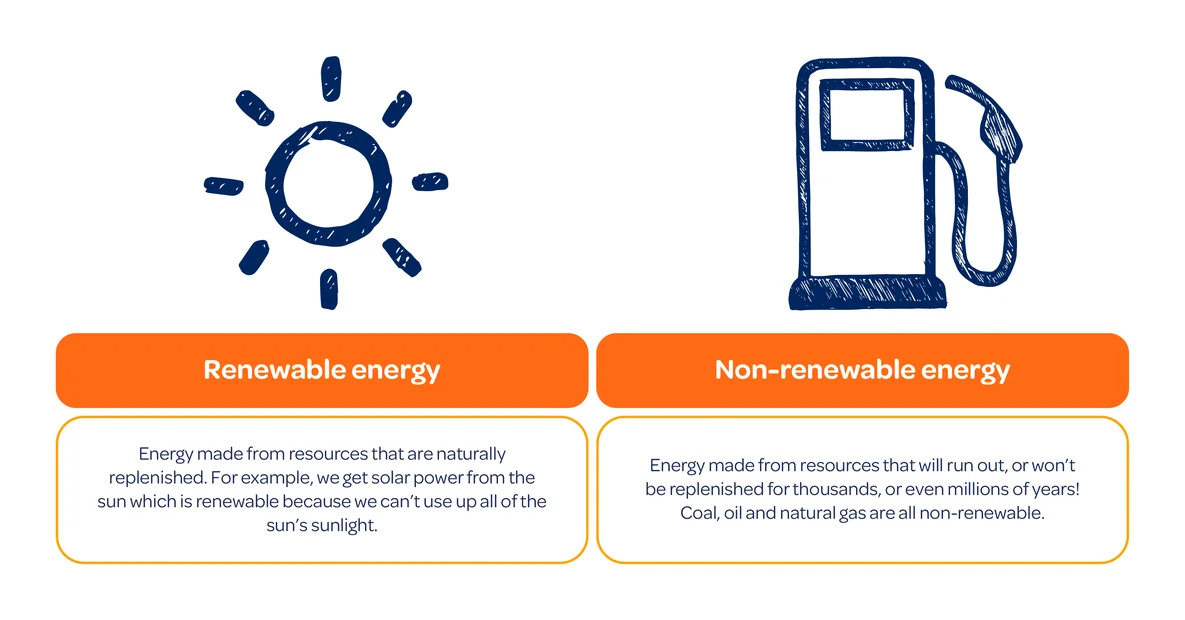
Renewable energy sources are much better for the environment. This is because they don’t emit carbon dioxide and other greenhouse gases that are harmful to our planet.
STEM superstars are working hard to find ways to power our communities with more renewable energy sources to help keep our planet happy and healthy. We’re doing pretty well in little ol’ NZ!
Aotearoa’s energy future
Aotearoa is a world leader in the use of renewable energy. Around 80% of our electricity already comes from renewable energy sources, but we’re not stopping there! Our goal is to generate 100% of our electricity from renewable energy sources by 2035.
Let's take a closer look:

Activity 2.1: Sources of energy
Investigate Aotearoa’s incredible range of energy sources to create an electrifying classroom energy display.
Turbine time
It’s time to spark your imagination and amp up the creative process by looking at how to generate electricity through the power of wind!
Engineering design process
To find a solution we’re going to follow the engineering design process. It’s a series of simple steps that engineers use to solve problems and make ideas work:
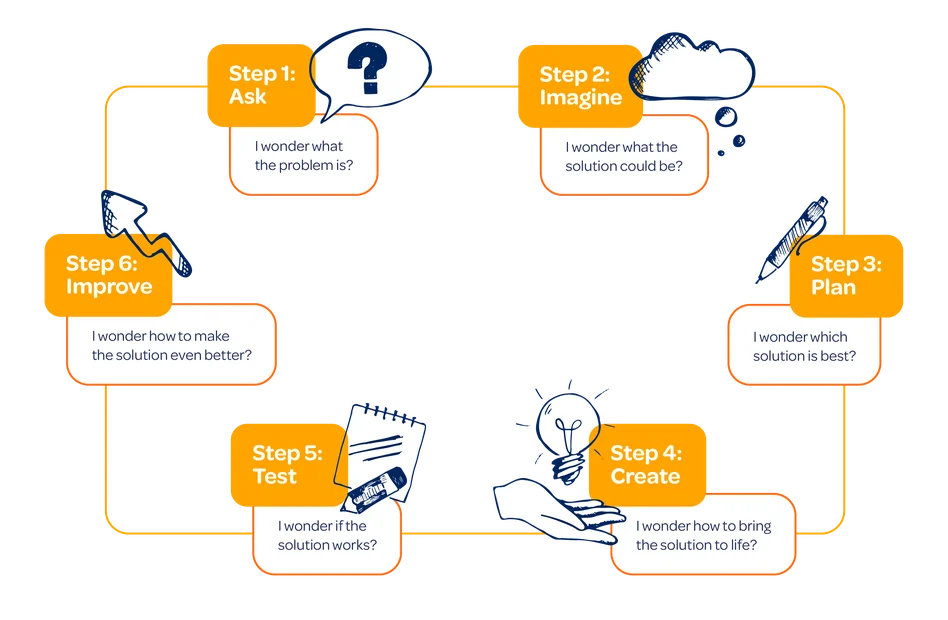
Ask
Engineers start their projects by asking lots of pātai (questions). This helps them understand the problem they’re trying to solve.
Let’s do some discovery of our own with the help of our resident renewable energy expert, Gene. Take some notes in your activity booklet!
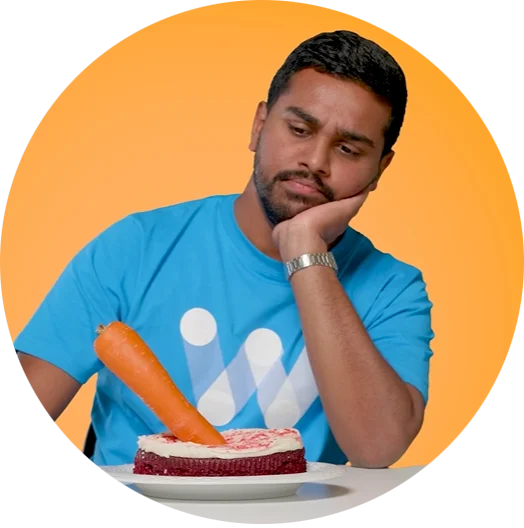
I wonder what our goals are?
Now you know a little more about renewable energy and turbines, it’s time to create some goals of your own.
In your tīma, think about some goals you’d like to achieve by the end of your Power Challenge journey. Write your ideas down in your activity booklet.
Imagine and plan
So, we know we need to create a wind turbine that generates renewable energy to light up a town. But how can we make sure we generate enough electricity to light up every single building?
Cue the next stage in the engineering design process, where our engineers imagine and plan some possible solutions to the problem.
Turbine design
Tīma (teams), it's time to think outside of the box and imagine and plan some wind turbine designs to light up your entire town!
As you will have seen from the ‘ask’ video, wind turbines are made up of these parts:
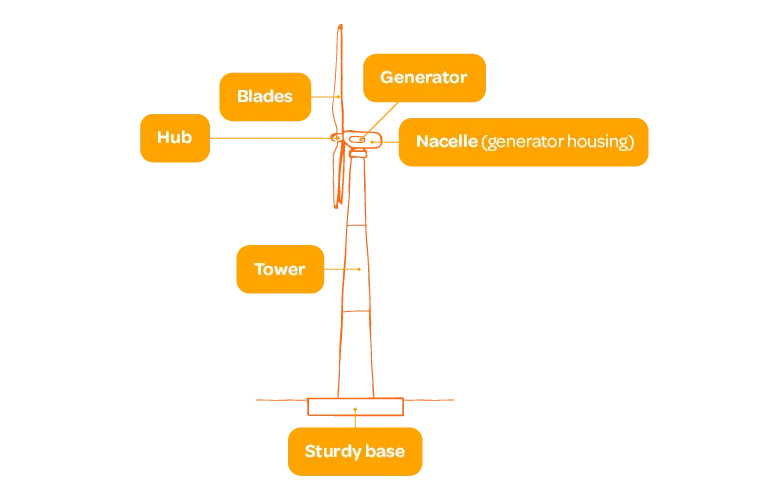
These elements are all carefully designed to make sure the turbine is aerodynamic and that it generates as much electricity as possible.
Remember, aerodynamics is the study of how air moves around an object. The better the aerodynamic design of your turbine, the more effective it will be at generating electricity.
To achieve the most aerodynamic turbine, you’ll be focusing on your turbine blades, and how different blade design variables will affect your turbine’s performance.
Variables are things that change or can be changed. People with STEM jobs use variables to experiment and test the best way to achieve their goals.
Some of the turbine blade design variables you could think about are:
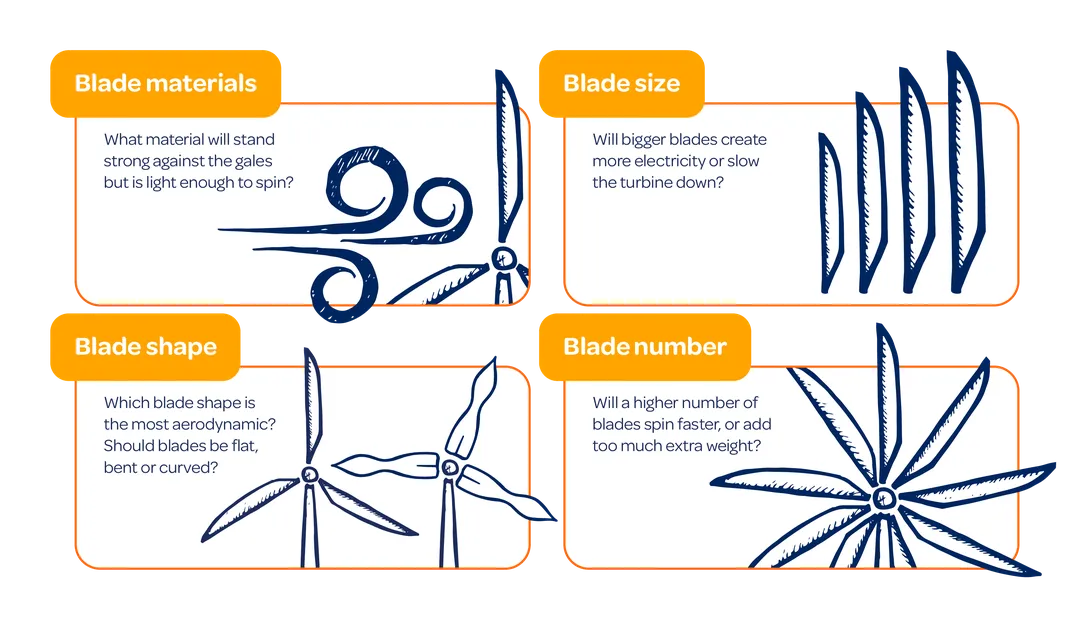
Activity 2.2: Blade design
Imagine a bunch of innovative, creative and STEM-tacular designs for your turbine blades. Then, choose the design and plan the materials you’ll need to create it.
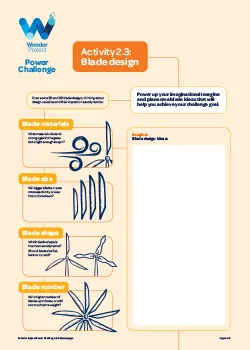
Reminder!
Continue to collect recyclable materials to make your turbines. You might also need to bring in a desk fan, and desk lamp if your school doesn’t have one.
Tools down!
Mīharo. Today you:
- Discovered how electricity is generated in Aotearoa
- Learned about renewable and non-renewable energy
- Researched energy sources in Aotearoa
- Learned about the engineering design process
- Discovered some solutions to our challenge pātai (question)
- Imagined and planned your turbine blade design